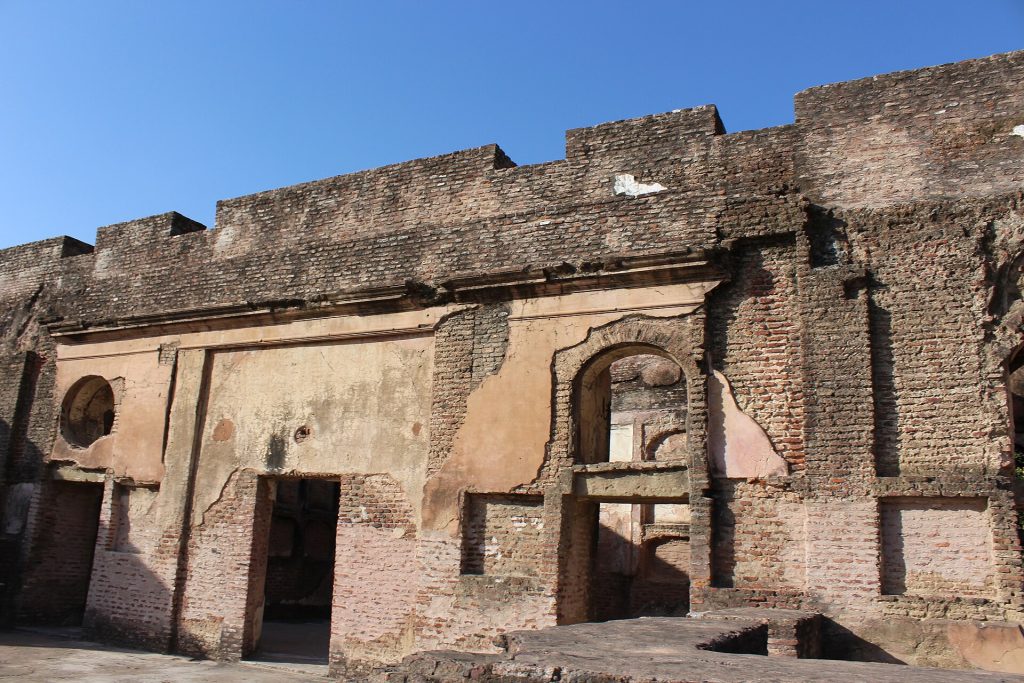Explore Kotha Guru's rich history from Mughal times to Sikh heritage. Uncover ancient secrets in Punjab's famous old village. Visit today!
Discover the captivating history and architecture of Samman Burj, the octagonal Mughal marvel in Lahore Fort, known for its royal and administrative legacy.
BHIVA, BHAI, and his brother, Rup Chand, businessmen of Sirhind, were devout Sikhs of the time of Guru Arjan. They lived honestly, celebrated the Sikh festivals, and entertained their brethren faith on such occasions. Once a Mughal came to deposit with them gold mohars hid in a hollow piece of bamboo. They put away the bamboopiece for safe custody, but forgot to make an entry of the deposit in their books. The Mughal returned after five years to claim the deposit.
Explore the rich history of Mukhlisgarh Fort, established by Mukhlis Khan and transformed by Banda Singh Bahadur in the Mughal era. Discover its legacy.
BANDA BAHADUR GURUDWARA, NEW DELHI In every faith and every land, whenever men become corrupt, despotic and tyrannous, God sends a scourge like me to punish them and teach them a lesson". Thus spoke Banda Singh Bahadur a great Sikh hero in reply to a question put to him by Mohammad Amin Khan, the author of Siyarul-Mutakherin when he went near him to ask as to why he was waging war against Mughals. Banda Bahadur was tortured to death by order of Mughal King Farrukh Siyar on June 19, 1716 in Mehrauli near Qutab Minar. Earlier he was taken through the streets of Delhi to the shrine of the Sufi Saint Khawaja Bakhtiar Kaki in Mehrauli. He was paraded around the tomb of Emperor Bahadur Shah.
Explore the brave stand of Prithi Chand Dadhval and Guru Gobind Singh against Mughal forces. Dive into legendary battles for freedom.
DILAWAR KHAN, a Mughal chief, who during the closing years of seventeenth century sent his son, referred to as Khanzada in Guru Gobind Singh`s Bachitra Natak, as head of an imperial expedition to exact tribute from the Guru. The young commander, marching with alacrity, reached the vicinity of Anandpur at midnight and intended to surprise the town. But the Guru was alerted by his chamberlain, Alam Chand, and the Sikhs, putting on their armour, rushed out to meet the invaders. The beating of the Ranjit Nagara and the warcries of the Sikhs echoed widely in the stillness of the dark winter`s night, giving an exaggerated estimate of their numbers.
Explore the pivotal role of Ramgarh Fort in Sikh history, a bastion against Mughal forces and birthplace of the Ramgarhia misl.
DUDDUN RAM, a saintly person of Pandori, in present day Amritsar district of the Punjab. He gave shelter in his dera at Pandori to some Sikh women and children when the Sikhs were being hounded out in 1817 Bk / AD 1760 by the joint forces of the subahs of Sirhind, Multan and Lahore under the orders of Ahmad Shah. A Niranjania informed the Mughal scouts, who searched the dera. As no Sikhs were apprehended inside the dera, Duddun Ram and his disciples were tortured, but they gave out nothing.
Explore Saddhu Bhai's life in Lahore during Guru Arjan's time and the historic events surrounding Chandu Shah in Sikh history.





